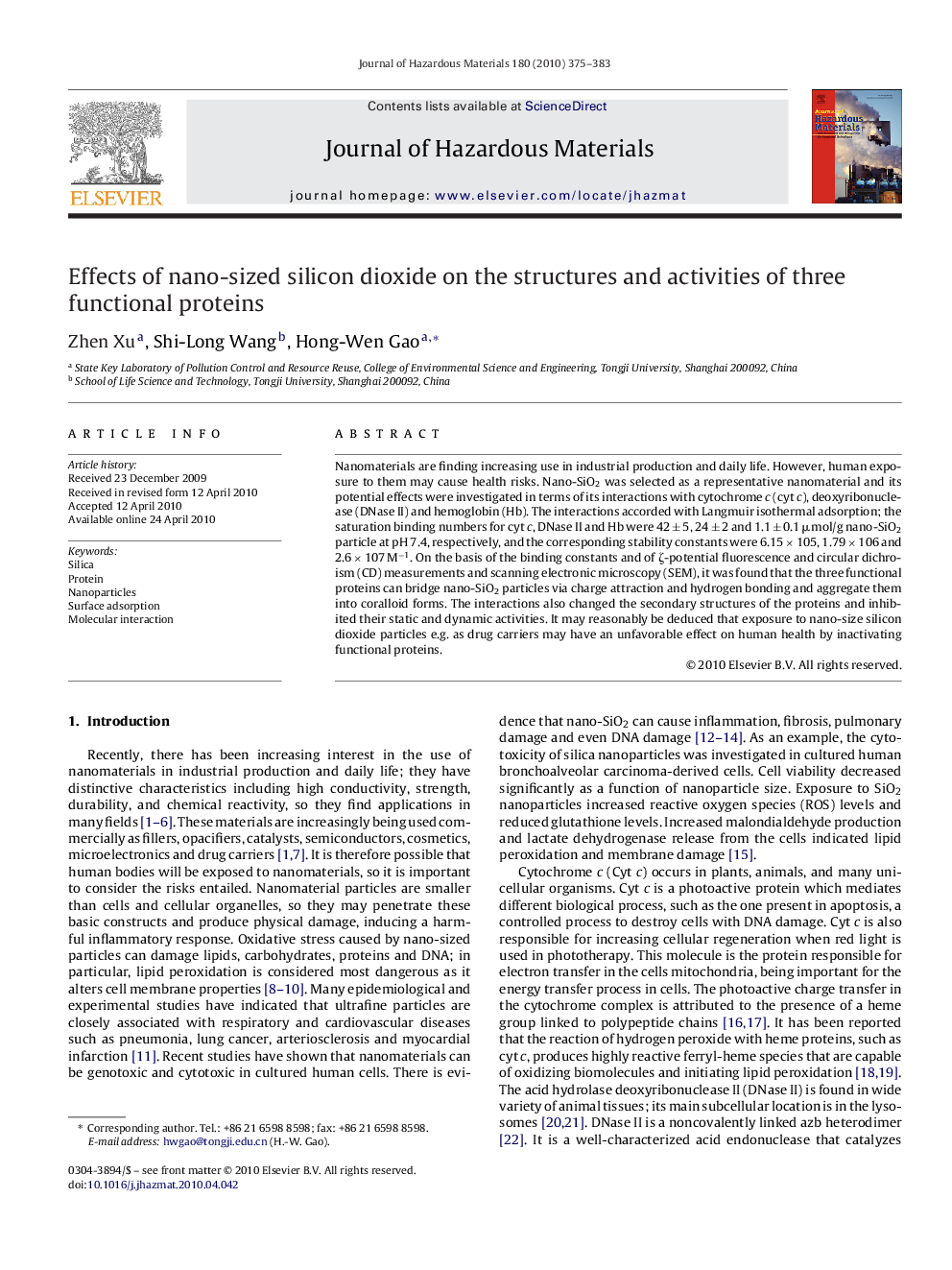| Article ID | Journal | Published Year | Pages | File Type |
|---|---|---|---|---|
| 580074 | Journal of Hazardous Materials | 2010 | 9 Pages |
Abstract
Nanomaterials are finding increasing use in industrial production and daily life. However, human exposure to them may cause health risks. Nano-SiO2 was selected as a representative nanomaterial and its potential effects were investigated in terms of its interactions with cytochrome c (cyt c), deoxyribonuclease (DNase II) and hemoglobin (Hb). The interactions accorded with Langmuir isothermal adsorption; the saturation binding numbers for cyt c, DNase II and Hb were 42 ± 5, 24 ± 2 and 1.1 ± 0.1 μmol/g nano-SiO2 particle at pH 7.4, respectively, and the corresponding stability constants were 6.15 Ã 105, 1.79 Ã 106 and 2.6 Ã 107 Mâ1. On the basis of the binding constants and of ζ-potential fluorescence and circular dichroism (CD) measurements and scanning electronic microscopy (SEM), it was found that the three functional proteins can bridge nano-SiO2 particles via charge attraction and hydrogen bonding and aggregate them into coralloid forms. The interactions also changed the secondary structures of the proteins and inhibited their static and dynamic activities. It may reasonably be deduced that exposure to nano-size silicon dioxide particles e.g. as drug carriers may have an unfavorable effect on human health by inactivating functional proteins.
Related Topics
Physical Sciences and Engineering
Chemical Engineering
Chemical Health and Safety
Authors
Zhen Xu, Shi-Long Wang, Hong-Wen Gao,
